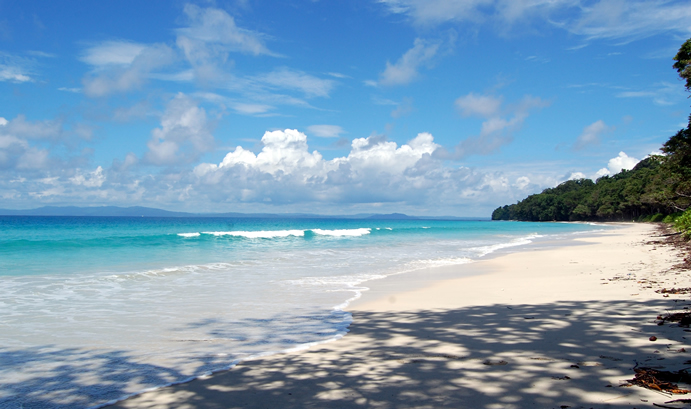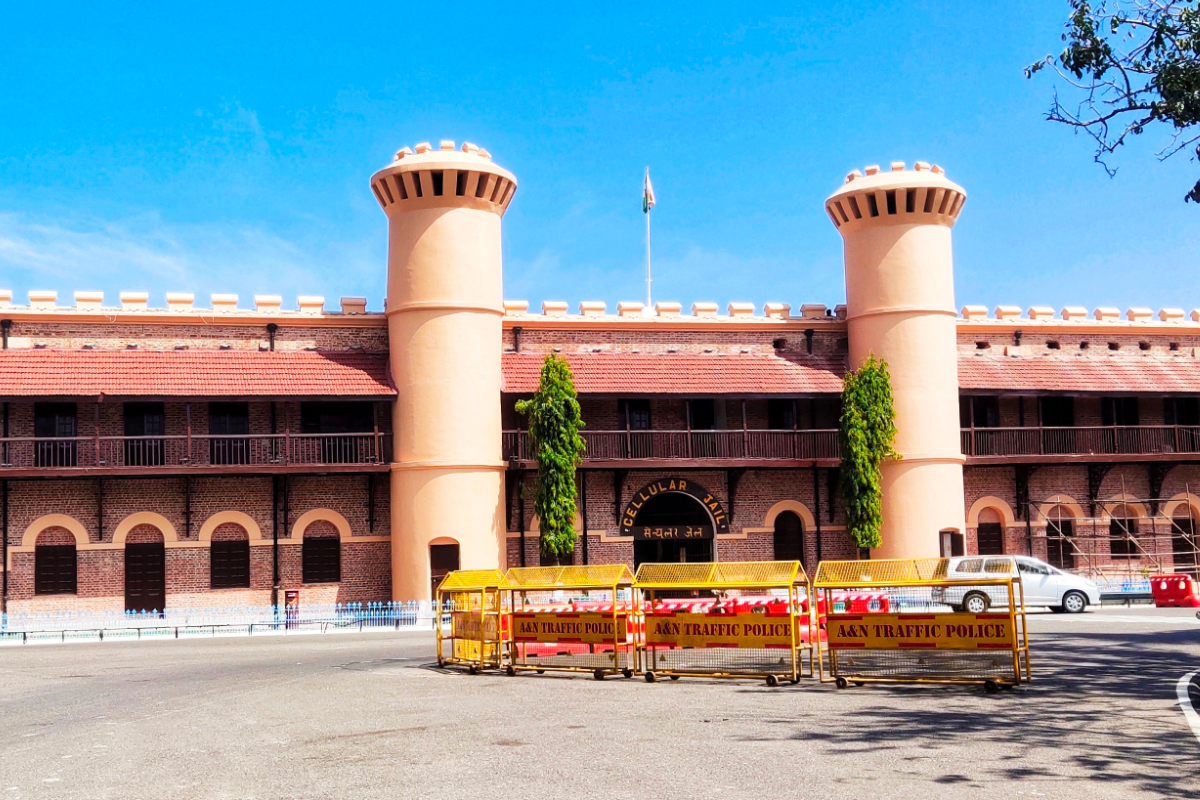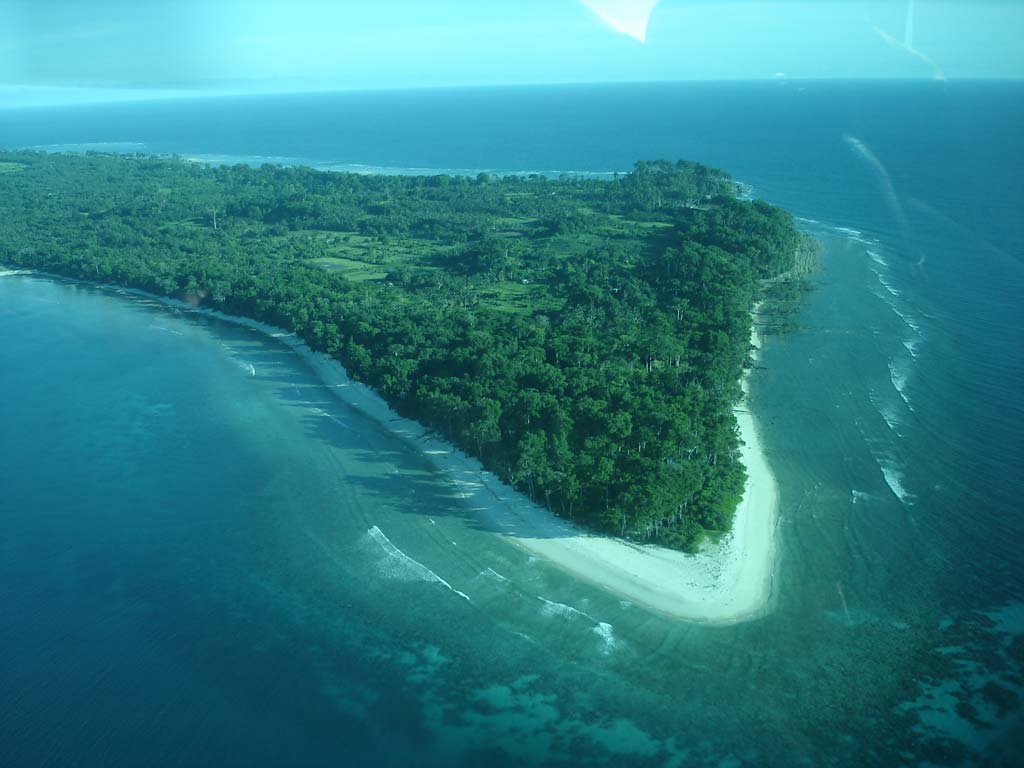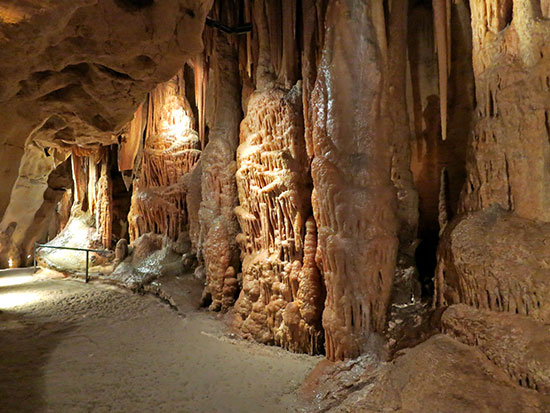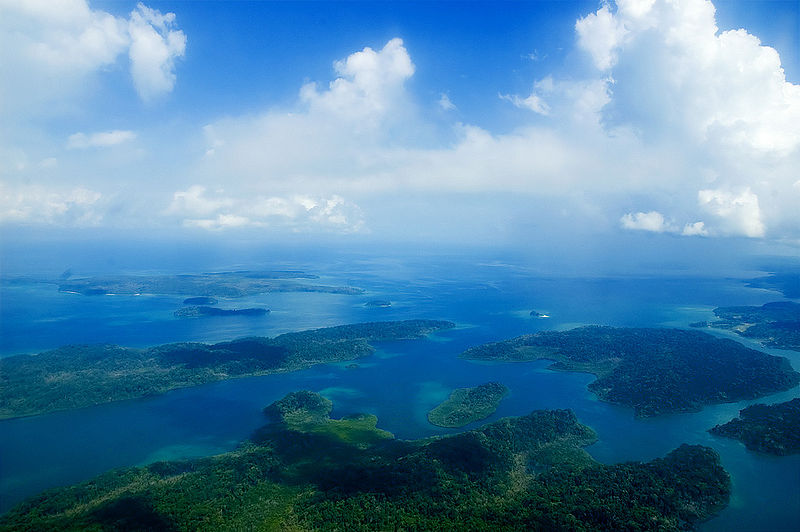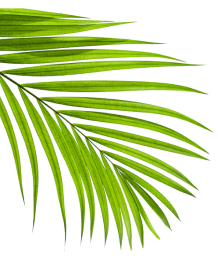
About Andaman
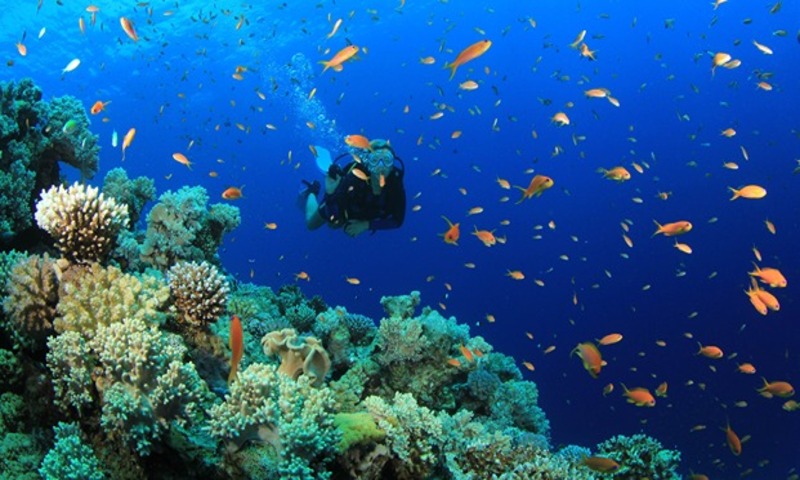
HIGHLIGHTS
Area : 8,249 square kilometers.
Location : Latitude -6° to 14°North, Longitude – 92° to 94°.
Airports : Veer Savarkar International Airport, Port Blair
Administrative capital : Port Blair
Language : Major language – Hindi, Bangla, Tamil, Telugu, Malayalam and Nicobarese
Highest peak : Saddle peak – 732 meters
Climate : Temperature – 23° (minimum) and 31° (maximum).
Humidity : 70-90%M
Tribes : Onge, Jarawa, Andamanese and Sentinelese of Negroid descent; Shompen and Nicobarese of Mongoloid descent.
Forest Area : 92% protected forest; 86% reserve forest.
Currency : Indian Rupees
ABOUT ANDAMAN
The Andaman and Nicobar Islands, located in the Bay of Bengal to the east of the Indian mainland, offer a truly unique and isolated experience. This group of 836 picturesque islands was once a hill range extending from Myanmar to Indonesia and is now covered in dense rain-fed forests and exotic flora and fauna. Of the 550 islands in the Andaman group, 28 are inhabited, while the smaller Nicobars have 22 main islands, 10 of which are inhabited. The Ten Degree Channel, which is 150 km wide, separates the two island groups.
Visitors to the Andaman and Nicobar Islands can explore historically significant landmarks from the freedom fighting days, such as Cellular Jail, Netaji Subhas Chandra Bose Island, Viper Island, Hopetown, and Mount Harriet. The islands are also home to a wide variety of bird species, with 270 species and subspecies reported, 106 of which are endemic. The Andaman Wood Pigeon, Andaman Padauk, and Dugong have been declared the State Bird, State Tree, and State Animal, respectively. The islands boast of 96 Wildlife Sanctuaries, nine National Parks, and one Biosphere Reserve, making them a nature lover’s paradise.
The Andaman and Nicobar Islands are blessed with the bounties of both south-west and north-east monsoons, providing visitors with an excellent opportunity to explore the islands and enjoy their natural beauty.
Port Blair
Port Blair is the capital city of the Andaman and Nicobar Islands, a union territory of India located in the Bay of Bengal. It is the largest city in the archipelago and serves as the administrative, cultural, and commercial center of the region. Port Blair is situated on the eastern coast of South Andaman Island and is connected to the mainland through air and sea links.
The city has a rich history, with its first settlement established by the British East India Company in 1789. The Cellular Jail, also known as Kala Pani, located in Port Blair, was used by the British colonial government to incarcerate Indian political prisoners during India’s struggle for independence. The jail has now been converted into a museum and a national memorial to honor the freedom fighters who suffered there.
Port Blair is also a popular tourist destination, offering visitors a unique blend of colonial history, natural beauty, and cultural diversity. Some of the must-visit attractions in the city include the Anthropological Museum, Samudrika Naval Marine Museum, Mahatma Gandhi Marine National Park, and Ross Island, among others. The city is also known for its seafood, local handicrafts, and water sports activities like scuba diving, snorkeling, and surfing.
BEST TIME TO VISIT ANDAMAN ISLANDS
The Andaman and Nicobar Islands have a tropical climate with a moderate temperature ranging from 23°C to 31°C throughout the year. The summer season from March to May is warm, but the sea breeze makes it pleasant. The humidity level during this season is around 80%, making it suitable for all kinds of tourist activities.
The monsoon season from May to August, and post-monsoon season from September to November, bring medium to heavy rainfall. Despite the rain, this season is recommended for a visit as tourists have more indoor and outdoor options, and the lush green vegetation and scenic beauty of the islands are more predominant. Hoteliers also offer attractive discounts during the monsoon season.
The winter season from December to February is not chilly and ideal for sightseeing. The weather during this season is pleasant, making it the best time to explore the islands. The water temperature during this season is perfect for water activities like swimming, scuba diving, and snorkeling.
Overall, the Andaman and Nicobar Islands have a favorable climate throughout the year, making it an ideal destination for tourists.
HOW TO REACH ANDAMAN
The Andaman and Nicobar Islands can be reached by air and sea.
By Air: The capital city of Port Blair is connected to major Indian cities like Chennai, Kolkata, Delhi, Mumbai, and Bangalore through direct flights operated by major airlines such as Air India, GoAir, SpiceJet, IndiGo, and Vistara. The Veer Savarkar International Airport in Port Blair is the main airport of the Andaman and Nicobar Islands.
By Sea: Regular passenger ships operate between Chennai, Kolkata, and Visakhapatnam to Port Blair. The journey takes around 60 to 70 hours and is subject to weather conditions. There are three to four sailings every month from Kolkata, Chennai, and Visakhapatnam. The ships have different classes of accommodation, including deluxe cabins, first-class cabins, and second-class cabins.
It is recommended to book your tickets well in advance, especially during peak season, as the availability of seats can be limited.
CLIMATE AND GEOGRAPHY OF ANDAMAN
The Andaman and Nicobar Islands have a tropical climate, with the South-west Monsoon typically setting in towards the end of May and the North-east Monsoon in November. Unlike many other destinations, the islands don’t experience a scorching hot summer or a bone-chilling winter, nor do they suffer from water clogging or traffic jams. Visitors can enjoy boating, swimming, snorkeling, and sightseeing all year round, as every season is a good season.
For North Indians seeking relief from the burning heat and chilly winters, visiting the islands in May, June, July, or December, January is highly recommended. Nature lovers will find the period from May to December particularly enchanting, as the forests are lush green, and the waterfalls are at their prime. Meanwhile, divers can experience the best conditions from December to April, and bird watchers will have the best sightings during the winter
ANDAMAN NICOBAR TRIBES
he indigenous tribes of the Andaman and Nicobar Islands have a long and complex history, with some estimates suggesting that they have inhabited the islands for up to 60,000 years. The tribes are divided into two main groups based on their physical characteristics: the Negrito tribes, who are believed to have African ancestry and include the Onge, Jarawa, and Sentinelese tribes; and the Mongoloid tribes, who are believed to have migrated to the islands from Southeast Asia and include the Nicobarese and Shompen tribes.
The tribes have traditionally lived as hunter-gatherers, moving throughout the islands to hunt game and gather fruits and other resources from the forests. They have their own distinct languages, which are largely unwritten and have not been studied in detail. Due to their isolation from the outside world, the tribes have developed unique cultural practices and traditions, including intricate body art and music.
In recent years, the tribes have faced a number of challenges, including encroachment on their land by outsiders, disease outbreaks, and forced attempts at assimilation. The Indian government has taken steps to protect the tribes and their way of life, including restricting access to certain areas of the islands and providing healthcare and other services to the tribes. Despite these efforts, however, the tribes remain vulnerable to external pressures and their future remains uncertain.
NICOBAR GROUP OF ISLANDS
The Andaman and Nicobar island groups have a long history, with the Nicobars being known since the time of Ptolemy. The inhabitants had trade relations with the outside world through copra. The islands were occupied by the Danes in 1756 and the British took possession in 1869. During World War II, the Japanese occupied the islands from 1942-45. After brief British repossession, the islands became an integral part of the Republic of India on August 15, 1947, as they were part of the old British Empire of India. Bishop John Richardson played a significant role in the modernization of Nicobarese society. After Independence, the government aimed to protect the interests of the Nicobarese by restricting entry to the islands, but settlement of non-tribals began in the late 1960s. Nicobar was declared a separate district on August 1, 1974, with its headquarters at Car Nicobar.
Traditional tribal councils govern most of the district except for three Panchayats and one Panchayat Samiti in Great Nicobar.
ANDAMAN NICOBAR HISTORY
The Andaman Islands have a long and rich history, dating back to prehistoric times. The indigenous people of the Andaman Islands are believed to have migrated from Africa over 26,000 years ago. The earliest known inhabitants of the islands were the Great Andamanese people, who lived on the islands for thousands of years until the arrival of outsiders.
The islands were first mentioned in the 7th century by the Chinese Buddhist monk I-Ching. Over the centuries, the Andaman Islands were visited by traders, explorers, and colonizers from all over the world. The islands were known for their rich natural resources, including timber, coconut, and spices.
During the British colonial period, the Andaman Islands became a place of exile for Indian political prisoners. The infamous Cellular Jail was built in 1906 to house these prisoners, and the jail is now a national monument.
During World War II, the Japanese occupied the Andaman Islands and used them as a base for their military operations in Southeast Asia. The islands were eventually liberated by the British in 1945.
Today, the Andaman Islands are a popular tourist destination known for their pristine beaches, clear waters, and rich biodiversity. The indigenous tribes of the islands, including the Jarawa and the Sentinelese, continue to live in isolation and maintain their traditional way of life.
Frequently
Asked Questions
There are several languages spoken in the Andaman and Nicobar Islands. The official languages are Hindi, English, Bengali, Tamil, and Telugu. However, there are also indigenous languages spoken by the tribes, including Onge, Andamanese, Sentinelese, Jarawa, and Nicobarese. The use of these languages is restricted and highly regulated by the Indian government to protect the tribes’ cultures and identities. Most of the population in the Andaman and Nicobar Islands speaks a mix of Hindi and Bengali, known as “Bengali Hindi.” English is also widely spoken, especially in tourist areas.
Indian citizens do not require a passport to visit the Andaman and Nicobar Islands as it is a part of India. However, they need to carry a valid photo identity proof like Aadhaar Card, Voter ID Card, Driving License, etc. Foreign nationals visiting the Andaman and Nicobar Islands require a valid passport and an Indian visa.
No, it is not possible to reach Port Blair, the capital city of the Andaman and Nicobar Islands in India, by train. Port Blair is located on the Andaman Sea and is situated on the Andaman Islands, which are a group of islands in the Bay of Bengal.
To reach Port Blair, you can either take a flight or a ship. Veer Savarkar International Airport in Port Blair is well-connected to major cities in India, such as Chennai, Kolkata, Delhi, and Mumbai, with regular flights operated by various airlines. Alternatively, you can also take a ship from Chennai, Kolkata, or Visakhapatnam, which are the main ports from where passenger ships depart for Port Blair. The journey by ship takes longer than a flight but provides a unique experience of traveling by sea.
The cheapest way to reach the Andaman and Nicobar Islands is by taking a ship from Chennai, Kolkata, or Vishakhapatnam.
However, the journey by ship takes around 50 to 60 hours, and the availability of tickets is limited. It is also not recommended for those who have sea sickness or are on a tight schedule.
The most convenient and time-saving way to reach the Andaman and Nicobar Islands is by taking a flight to Port Blair, the capital city. Direct flights are available from major cities like Chennai, Kolkata, Delhi, and Bangalore.
To get the best deals on flights, it is recommended to book well in advance and keep an eye out for discounts and offers. Additionally, you can also look for budget-friendly accommodation options, plan your travel during the off-season, and avoid peak holiday periods to save on overall travel expenses.
Traveling to Andaman and Nicobar Islands during the offseason, which is from May to September, can be more affordable than the peak tourist season. The discounts on flights, hotels, and other activities make it a great option for budget-conscious travelers. However, keep in mind that the weather can be unpredictable during this time, with a chance of rain and thunderstorms. While water activities may not be available, the lush greenery and waterfalls during this season can be an attractive sight. Overall, if you’re looking for a budget-friendly time to visit Andaman, consider traveling during the offseason.
Yes, it is possible to travel from mainland India to Andaman by cruise. The Indian government operates regular passenger ships between the cities of Chennai, Kolkata, and Vizag (Visakhapatnam) on the mainland and Port Blair, the capital of the Andaman and Nicobar Islands. The journey takes around 2-3 days, depending on the route and weather conditions.
Passenger ships have different classes of accommodation ranging from basic bunk beds to air-conditioned cabins with attached bathrooms. The tickets can be booked in advance directly from the shipping corporation’s offices in the respective cities. It is advisable to check the sailing schedule and weather conditions before booking the tickets, especially during the monsoon season.
The fare for Andaman ship tickets varies depending on the class of travel, the route, and the season. The fare for a standard class ticket for a ship journey from Chennai to Port Blair can range from around INR 1,400 to INR 2,000 per person, while a deluxe cabin can cost between INR 4,000 to INR 5,000. The fares for ships from Kolkata and Vishakhapatnam can also be in a similar range.
However, it’s important to note that the ship journey takes around 50 to 60 hours, and the availability of tickets is limited. Additionally, the journey can be challenging and uncomfortable for travelers who are prone to seasickness. Therefore, most travelers prefer to take a flight to reach Andaman and Nicobar Islands, which is more convenient and time-saving, albeit more expensive than the ship journey.
Yes, Andaman and Nicobar Islands have ATM facilities, but they may not be available in all areas. Most of the major towns and cities on the islands have ATM facilities, including Port Blair, Havelock Island, and Neil Island. However, it is always recommended to carry sufficient cash with you, especially if you plan to visit remote areas where ATM facilities may not be available.
Also, it’s important to note that some of the smaller businesses and vendors may not accept credit or debit cards, so it’s always a good idea to carry some cash with you. Additionally, some ATMs may charge a transaction fee or have a daily withdrawal limit, so it’s advisable to check with your bank regarding any charges or limits before using the ATM.
Yes, alcohol is allowed in Andaman and Nicobar Islands. The legal drinking age in India is 21 years, and the same applies to Andaman and Nicobar Islands. You can purchase alcohol at government-run liquor shops or in licensed bars and restaurants. However, it’s important to note that drinking in public places is prohibited and can lead to legal consequences. It’s also advisable to consume alcohol responsibly and avoid excessive drinking. Furthermore, some of the tribal areas in the islands are “dry zones,” where the sale and consumption of alcohol are strictly prohibited. Therefore, it’s always a good idea to check with the locals or authorities before consuming alcohol in any area to avoid any legal issues or cultural insensitivity.
There are several islands in Andaman and Nicobar that are off-limits to tourists due to their strategic location or being home to indigenous tribes. The Indian government has imposed strict restrictions on visiting these islands to protect the vulnerable tribal communities and preserve their way of life.
One such island is North Sentinel Island, which is home to the Sentinelese tribe, one of the last uncontacted tribes in the world. The Indian government has prohibited anyone from visiting or coming within three nautical miles of the island due to the tribe’s hostile behavior towards outsiders.
Other islands, such as Car Nicobar, and Great Nicobar, have restricted access, and tourists need prior permission from the authorities to visit them.
It’s essential to respect these restrictions and not attempt to visit these islands as it can lead to legal consequences and, more importantly, pose a threat to the indigenous tribes’ safety and way of life.
Some of the Nicobar Islands are restricted to tourists due to their strategic location or being home to indigenous tribes. The indigenous tribes living in the Nicobar Islands have unique cultures and languages and have had limited contact with the outside world. They have the right to protect their isolation and privacy, and visiting these islands can pose a risk to their safety and well-being. The tribes have limited immunity to diseases that are common in other parts of the world, and even a small infection or illness can have devastating consequences for these communities.
To preserve the tribes’ way of life and culture, the Indian government has imposed strict regulations on visiting these islands. Tourists need prior permission from the authorities to visit any of the Nicobar Islands. The Indian government takes these restrictions very seriously, and violation of these regulations can lead to legal consequences. Therefore, it’s important to respect these restrictions and understand the significance of preserving the indigenous tribes’ way of life and culture.
Andaman and Nicobar Islands have a diverse religious landscape, with people of different religions and faiths living together. The majority of the population is Hindu, followed by Christians, Muslims, Sikhs, Buddhists, and other religions. There are also a significant number of indigenous tribes in the islands who practice their traditional animistic beliefs.
The Indian government guarantees freedom of religion to all its citizens, and people of different religions and faiths coexist peacefully in Andaman and Nicobar Islands. The islands have many temples, mosques, churches, and gurudwaras, and people of different religions celebrate their festivals and traditions together.
The islands’ diverse religious landscape is a reflection of the multiculturalism and diversity of India as a whole. Therefore, visitors to Andaman and Nicobar Islands can experience the unique and harmonious coexistence of different religions and faiths, making it a culturally enriching experience.
Andaman is generally a safe place for travelers. The crime rate is low, and the people are friendly and welcoming. However, as with any travel destination, it is always important to take necessary precautions to ensure your safety.
One risk that is unique to Andaman is the presence of isolated tribes. It is illegal to visit the North Sentinel Island, where the Sentinelese tribe lives, and visitors are not allowed to come into contact with any of the other indigenous tribes of the Andaman Islands. Violating these restrictions can result in serious consequences, including arrest, fines, and even physical harm.
In addition, visitors should also take precautions while participating in adventure activities such as water sports and trekking. It is important to follow safety guidelines provided by tour operators and use proper equipment to avoid accidents.
Overall, Andaman is a safe destination, and as long as visitors take necessary precautions and follow the rules and regulations in place, they should have a pleasant and enjoyable trip.
The duration of the cruise from the mainland to the Andaman Islands can vary depending on the route and the type of cruise. The most common route is from Chennai to Port Blair, which takes around 60-70 hours. However, there are also cruises that operate from Kolkata and Visakhapatnam, which can take around 50-60 hours. It’s important to note that the duration can also be affected by weather conditions and other factors, so it’s recommended to check with the cruise operator for the most accurate information.
The main airport in the Andaman and Nicobar Islands is the Veer Savarkar International Airport, also known as Port Blair Airport. It is located in the capital city of Port Blair and is the only airport that serves the Andaman and Nicobar Islands. The airport has direct flights from cities such as Delhi, Mumbai, Chennai, Kolkata, and Bangalore.
Yes, it is possible to find vegetarian food on the Andaman Islands. Many restaurants and eateries offer vegetarian options, including Indian, Chinese, and Continental cuisines. Some popular vegetarian dishes you can try include dal, chana masala, vegetable biryani, paneer dishes, dosas, idlis, and uttapams. You can also find fresh fruits, vegetables, and salads in local markets. However, please note that the availability of vegetarian options may vary depending on the location and type of restaurant. It is always a good idea to confirm with the restaurant staff about the ingredients used in the dishes to ensure that they are vegetarian.
Andaman is known for its seafood, and you can find a variety of seafood options in many restaurants and local eateries. Some popular seafood dishes you can try include fish curry, lobster, prawns, crab, and squid. Here are some places where you can enjoy seafood on the Andaman Islands:
Most major mobile network operators like Airtel, Vodafone-Idea, Reliance Jio, and BSNL have network coverage in the Andaman Islands. However, network coverage may vary by location, so it’s always a good idea to check with your mobile service provider about the network coverage in Andaman and any applicable roaming charges.
Andaman has many beautiful places to visit. Here are some of the top tourist destinations in Andaman:
Radhanagar Beach: Located on Havelock Island, Radhanagar Beach is one of the most beautiful beaches in Asia and is known for its clear blue waters and pristine white sands.
Cellular Jail: A national memorial located in Port Blair, Cellular Jail is a must-visit destination for history enthusiasts as it played a significant role in India’s struggle for independence.
Ross Island: Located just a short boat ride from Port Blair, Ross Island is a beautiful place to explore, with its colonial-era ruins, beautiful beaches, and scenic views.
Mahatma Gandhi Marine National Park: Located near Wandoor Beach, the Mahatma Gandhi Marine National Park is a protected area known for its rich marine life, including coral reefs, fish, and sea turtles.
Baratang Island: This island is famous for its natural wonders, including the limestone caves and the mud volcano.
Neil Island: Neil Island is known for its stunning beaches, including the popular Bharatpur Beach and Laxmanpur Beach.
North Bay Island: This island is known for its beautiful coral reefs, making it a popular destination for snorkeling and scuba diving.
These are just some of the top tourist destinations in Andaman, and there are many more beautiful places to explore on the islands.
Andaman offers a plethora of exciting activities for tourists to enjoy. If you love exploring the underwater world, scuba diving and snorkeling are popular activities that allow you to discover the rich marine life and coral reefs. You can also visit the Cellular Jail, which is a national monument and a significant landmark in India’s history. The islands are perfect for island hopping, and you can take a ferry or a speedboat to explore popular destinations like Havelock, Neil Island, Ross Island, and Baratang Island. Andaman has some of the most beautiful beaches in Asia, and you can go beach hopping and relax in the sun, sand, and sea. You can also visit the limestone caves and mud volcanoes on Baratang Island, which are unique natural wonders that are worth exploring. The Mahatma Gandhi Marine National Park is home to a diverse range of marine life, including corals, fish, and sea turtles, making it an ideal destination for nature enthusiasts. And if you love water sports, you can enjoy activities like jet skiing and parasailing. With so many exciting things to do in Andaman, you’re sure to have a memorable vacation.
The climate in Andaman is tropical, with high humidity throughout the year. The temperature remains fairly consistent, ranging from 23°C to 31°C. The monsoon season begins in May and lasts until mid-September, during which time the islands experience heavy rainfall and strong winds. The best time to visit Andaman is from October to May when the weather is pleasant and ideal for outdoor activities. The water visibility for scuba diving and snorkeling is also at its best during this period. However, it’s essential to note that Andaman is prone to cyclones, particularly between the months of May and November. It’s always a good idea to check the weather forecast before planning your trip and to take necessary precautions during the cyclone season.
The currency used in Andaman is the Indian rupee (INR), as it is part of India. It is advisable to carry enough cash as ATMs may not be easily accessible in all parts of the islands. Major credit and debit cards are accepted in larger establishments such as hotels, restaurants, and shops, but it’s always a good idea to carry cash in smaller towns and villages. Foreign currency can be exchanged at airports and authorized money changers, but it’s recommended to exchange money only from authorized dealers to avoid scams or counterfeit notes.
The cost of living in Andaman can be slightly higher compared to Goa. Andaman is a remote island, and most of the goods and supplies are transported by sea or air, making them more expensive. The cost of food, accommodation, and transportation in Andaman is relatively higher compared to Goa due to the logistical challenges involved in running businesses on the islands. However, the difference in cost may not be significant, and it ultimately depends on the type of accommodation and activities you choose to indulge in. In general, both Andaman and Goa offer a range of options to suit different budgets, and it’s possible to have an enjoyable vacation at a reasonable cost in both places.


